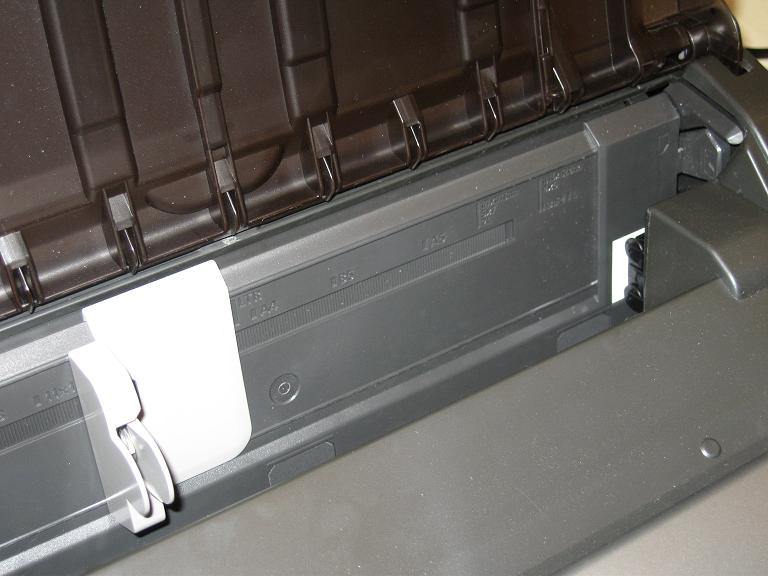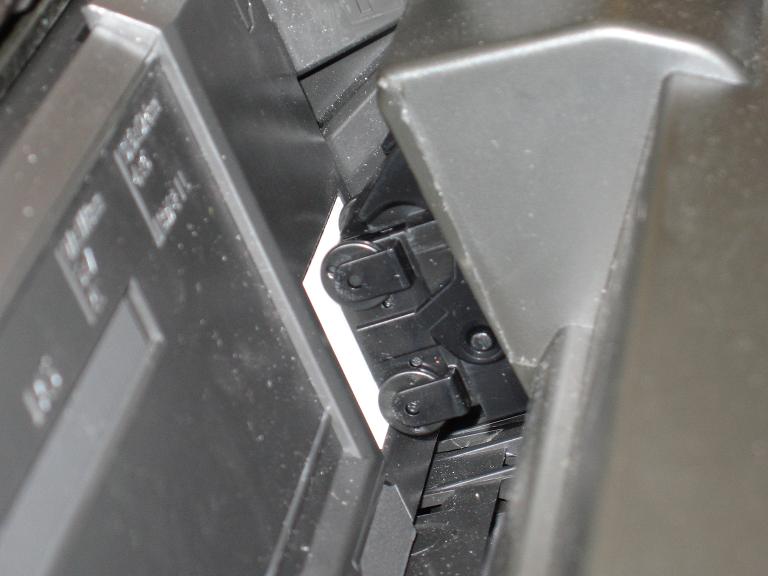- Joined
- Jun 16, 2006
- Messages
- 3,645
- Reaction score
- 85
- Points
- 233
- Location
- La Verne, California
- Printer Model
- Epson WP-4530
I have been running some benchmarks on how long it takes for my new i9900 to print when specifying different 8.5 by 11 inch papers and different qualities of print, looking for the fastest printout. (I am using the ArcSoft PhotoStudio that came with my Canon camera and specifying bordered prints.) The fastest printout that looks good is obtained by printing on plain paper with the Standard quality; 45 seconds from clicking the print button until the paper is ejected. I decided to see what it would look like on photo paper, realizing that since the i9900 has only dye inks, I wouldn't get into trouble like I would with my other printers that would switch to pigment black for plain paper. I used the same settings as I previously did for the plain paper printout, but the printout took over two minutes.
That was when I discovered that this printer knows what kind of paper you put in it, at least as far as distinguishing between plain paper and Epson Glossy Photo Paper. For those of you who have this printer, you know that there is a little black "Dolly", for lack of a better term, located in the lower right corner of the sheet feeder. For those of you who don't have an i9900, here is a picture of the sheet feeder area of the printer:

And here is a closeup of the dolly:

Apparently, this dolly has some kind of illumination and sensor that measures the reflectivity of the paper.
So, not wanting to be outsmarted by this printer, I put a sheet of photo paper in the sheet feeder and held a sheet of plain paper in front of it so that the dolly would see the plain paper. Sure enough, the printer sucked up the photo paper and printed a beautiful photo in 45 seconds, just like it did on the plain paper originally. The photo is slightly lighter than all the other prints I made on the photo paper but certainly just as acceptable.
The reason why this printer is so fast is that it has a very large print head, three times larger than most other Canon printers, 5/8 inch instead of 3/16 inch. When printing Standard quality on plain paper, the printer advances the paper 5/16 inch between each scan of the print head. This results in two passes of the print head over each area of the paper. There is also a single-pass mode that advances the paper 5/8 inch but it is unacceptably light.
Throughout all of my testing, I have come to the conclusion that the only thing the Print Advisor does is dim out some of the selections in the Print Quality, set the Grayscale, set the Print Type under the Manual Color Adjustment, and set the Media Type. In other words, High Print Quality works exactly the same, no matter which photo paper you select. The Print Quality has mainly to do with how far the paper advances on each scan of the print head.
Thanks, Canon, for crippling our printers (but we have a work-around).
That was when I discovered that this printer knows what kind of paper you put in it, at least as far as distinguishing between plain paper and Epson Glossy Photo Paper. For those of you who have this printer, you know that there is a little black "Dolly", for lack of a better term, located in the lower right corner of the sheet feeder. For those of you who don't have an i9900, here is a picture of the sheet feeder area of the printer:

And here is a closeup of the dolly:

Apparently, this dolly has some kind of illumination and sensor that measures the reflectivity of the paper.
So, not wanting to be outsmarted by this printer, I put a sheet of photo paper in the sheet feeder and held a sheet of plain paper in front of it so that the dolly would see the plain paper. Sure enough, the printer sucked up the photo paper and printed a beautiful photo in 45 seconds, just like it did on the plain paper originally. The photo is slightly lighter than all the other prints I made on the photo paper but certainly just as acceptable.
The reason why this printer is so fast is that it has a very large print head, three times larger than most other Canon printers, 5/8 inch instead of 3/16 inch. When printing Standard quality on plain paper, the printer advances the paper 5/16 inch between each scan of the print head. This results in two passes of the print head over each area of the paper. There is also a single-pass mode that advances the paper 5/8 inch but it is unacceptably light.
Throughout all of my testing, I have come to the conclusion that the only thing the Print Advisor does is dim out some of the selections in the Print Quality, set the Grayscale, set the Print Type under the Manual Color Adjustment, and set the Media Type. In other words, High Print Quality works exactly the same, no matter which photo paper you select. The Print Quality has mainly to do with how far the paper advances on each scan of the print head.
Thanks, Canon, for crippling our printers (but we have a work-around).
